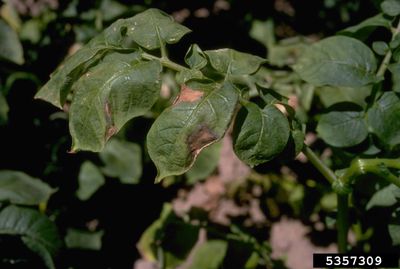Symptoms of Potato Fusarium Wilt
The first sign of potatoes with fusarium wilt is yellowing of the leaves, following by wilting, rolling, or curling, sometimes affecting leaves on only one side of the plant. Symptoms of fusarium wilt typically begin on the lower part of the plant, eventually moving up the stem. The potatoes themselves may be blemished or decayed, often with sunken brown areas, especially at the stem end.
Treating Potato Fusarium Wilt
Potato fusarium wilt is more severe when temperatures above 80 degrees F. (27 C.) or when plants are water stressed. Potato fusarium wilt progresses faster during hot, damp weather. The disease spreads by water, garden equipment, human footsteps, or sometimes by pests. Plant fusarium-resistant varieties, which are marked by an “F” on the label. Look for disease-free tubers that have been pre-treated with fungicide to prevent development of disease. Never plant potatoes in soil where fusarium wilt is suspected. Rotate plants with other plants for four to six years. Avoid planting other solanaceous plants such as tomatoes, peppers, tomatillos, eggplants, tobacco, or petunias in the area. Control weeds, as many harbor disease pathogens. Also, remove infected plants and destroy them immediately. Feed potatoes using a slow-release fertilizer. Avoid high-nitrogen fertilizers, which may increase susceptibility. Avoid excessive watering. Water at the base of plants and avoid overhead irrigation whenever possible. Water potatoes early in the day, which allows plants to dry before temperatures drop in evening. Sterilize tools frequently, using a solution of one part bleach to four parts water when working with potatoes.
